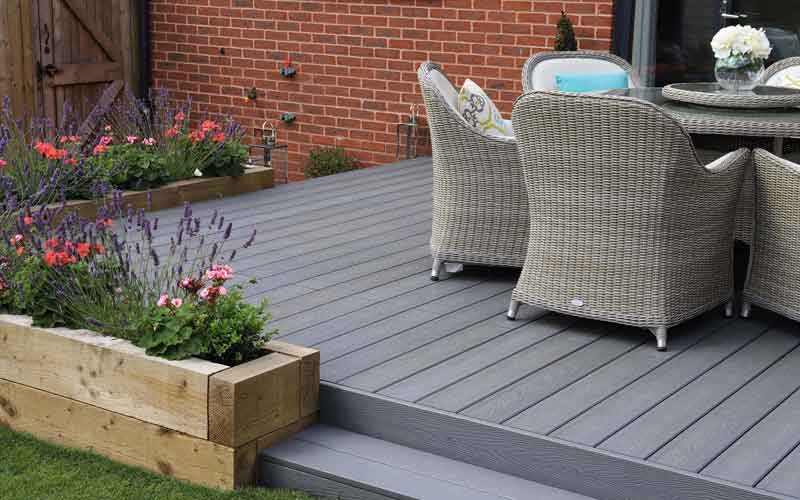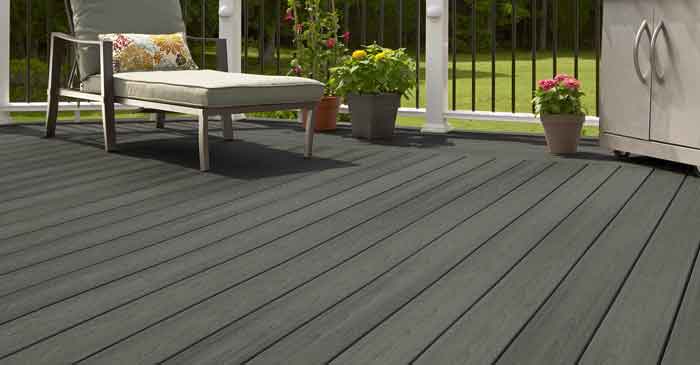The Comprehensive Guide to Installing Composite Decking
Introduction: Composite decking has gained popularity in Stirling, Scotland, thanks to its durability, low maintenance requirements, and resistance to Scotland’s unique weather conditions. Whether you’re enhancing your outdoor living space or revamping an existing deck, installing composite decking requires careful planning and execution. In this guide, we’ll explore the step-by-step process of laying composite decking in Stirling, Scotland, while considering the region’s climate and specific installation challenges.
Preparation and Planning:
- Choose the Right Decking Material: Selecting high-quality composite decking suitable for Scotland’s climate is crucial. Look for products engineered to withstand moisture, temperature fluctuations, and UV exposure. Consider factors such as color, texture, and board size to match your aesthetic preferences and outdoor decor.
- Obtain Necessary Permits: Before starting any construction, check local building codes and regulations in Stirling, Scotland, to determine if permits are required for your decking project. Obtain the necessary permits to ensure compliance with safety and construction standards.
- Measure and Plan the Layout: Accurately measure the area where you intend to install the composite decking. Plan the layout, considering factors such as access points, drainage, and any existing structures. Create a detailed layout or blueprint to guide the installation process and optimize material usage.

Installation Process:
- Prepare the Substructure: Inspect the existing deck frame or create a new substructure using pressure-treated lumber or composite materials. Ensure the substructure is level, sturdy, and properly anchored to the ground or supporting structure. Install joists according to the manufacturer’s recommendations, typically spaced at 16 inches on center.
- Install Starter and End Boards: Begin by installing starter boards along the perimeter of the deck, securing them to the substructure with appropriate fasteners. Use stainless steel or composite deck screws to prevent corrosion and ensure durability. Leave a small gap between the starter boards and any adjacent structures to allow for expansion and contraction.
- Lay the Decking Boards: Place the composite decking boards perpendicular to the joists, starting from one end of the deck and working towards the opposite end. Leave a consistent gap between each board to accommodate expansion and drainage, typically ranging from 1/8 to 1/4 inch. Use spacers or specialized clips to maintain uniform spacing.
- Secure the Decking Boards: Secure the decking boards to the joists using recommended fastening methods, such as hidden clips, screws, or nails. Follow the manufacturer’s guidelines regarding fastener placement and spacing to ensure optimal performance and structural integrity. Avoid over-tightening fasteners to prevent damage to the boards.
- Cut and Trim as Needed: Use a circular saw or miter saw to cut decking boards to the desired length, ensuring precise fits around corners, obstacles, and edges. Take necessary safety precautions and wear protective gear, including goggles and ear protection, when cutting composite materials.
- Finish the Edges: For a polished look, install fascia boards or trim pieces along the perimeter of the deck to conceal exposed edges and create a clean finish. Secure the fascia boards using appropriate fasteners and adhesive, ensuring they align seamlessly with the decking boards.
- Apply Sealant (Optional): While composite decking is resistant to rot, moisture, and insect damage, applying a sealant or protective coating can enhance its longevity and appearance. Choose a sealant specifically formulated for composite materials and follow the manufacturer’s instructions for application.
- Perform Final Inspections: Once the decking installation is complete, inspect the entire deck for any visible defects, loose fasteners, or imperfections. Make necessary adjustments and corrections to ensure the deck meets quality standards and safety requirements.
Maintenance and Care:
- Regular Cleaning: Maintain the appearance and cleanliness of your composite decking by regularly sweeping away debris and dirt. Periodically wash the deck surface with mild soap and water to remove stains, mold, and mildew. Avoid using harsh chemicals or abrasive cleaners that may damage the composite material.
- Preventative Measures: To minimize wear and tear, place furniture pads or coasters under heavy objects to prevent scratching or indentation. Promptly clean up spills to prevent staining and avoid placing hot objects directly on the deck surface to prevent discoloration.
- Inspect and Repair: Periodically inspect the decking and substructure for signs of damage, moisture intrusion, or structural issues. Replace damaged boards, tighten loose fasteners, and address any drainage or ventilation issues to maintain the integrity of the deck.
- Installing composite decking in Stirling, Scotland, requires careful planning, precise execution, and ongoing maintenance to ensure long-lasting beauty and performance. By following the steps outlined in this guide and considering Scotland’s climate and environmental factors, you can create a stunning outdoor living space that enhances your home’s value and provides years of enjoyment for you and your family.

